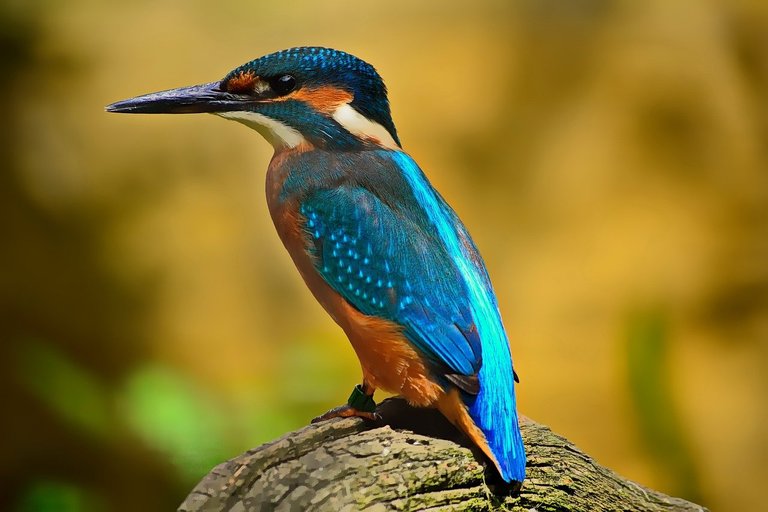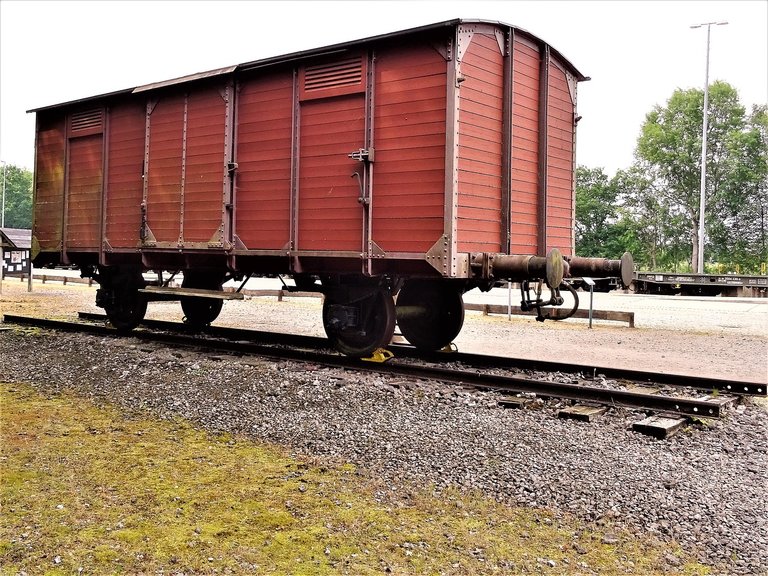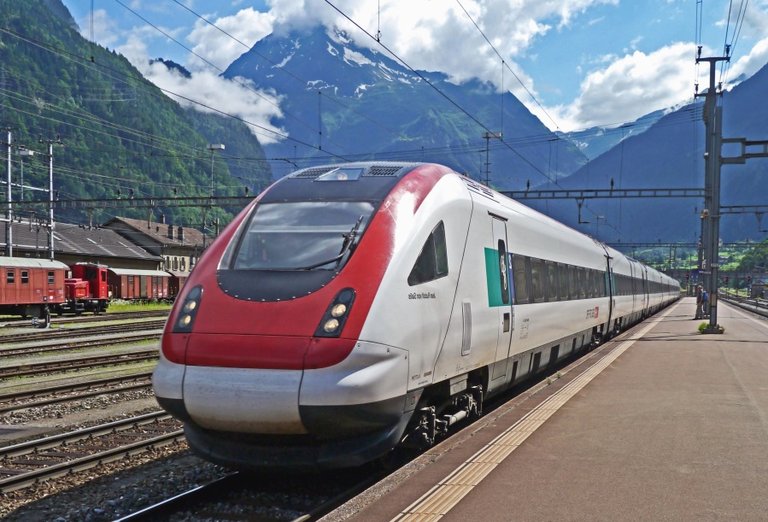The importance of transportation cannot be over emphasized. Not having to trek from your city to another city is really a marvel and one of man's greatest achievements. The idea for every mode of transportation, starting from the bicycle to the aeroplane, was inspired by nature, so it is not wrong for me to say that when man encounters problem with these machines, it is expected that the answers to that problem should be found in nature. Thus, it is not surprising that when man started experiencing problems with speed trains, he found the solution to that problem in nature.
The Kingfisher are one of the most perfect creatures in nature. It's speed, agility and accuracy are worth noting. They are known for their accuracy of diving into the water to catch fishes barely making any splash. For you to appreciate this, remember that an object in the water is not really at the position it appears to be from at the surface due to refraction. Yet still, this wonderful creature, sights a fish from it's perch, makes a dive into the water, without even making any splash to scare the fish, then flies back to the perch victorious.
Before we get to know how man applied an idea he got from the kingfishers, I will like us to start from the beginning of railway transportation system, so that we realize how man encountered this very problem in the first place.
TRAINS
Amongst the types of transportation we have the railway transportation which is a transportation that involves the use of trains. A train is a means of transportation that consist of a number of vehicles connected together, which runs on a rail track, transporting people and goods from one point to another. The power required to move trains are provided by locomotives found in a number of units that are self-propelled.
During the early stages of this invention, trains were powered by steam, but as technology advances, man built trains that are powered by diesel or electric locomotives, while some are been powered by a combination of these two locomotives. A rail track is made up of two rails running from a point to another, (apart from the monorail, which is just one), most times crossing states and countries. Now that we know what trains and railways are, let's get to know how it all began.
HISTORY OF THE RAILWAY
All historys of transportation started about 2000 years ago when ancient civilization started in places like Egypt, Greece and Babylon. In those times, transportation of people and goods were mainly by the use of carts pulled by either horse, or bulls. One day, they thought to themselves, of how less stressful it would be for them and the animal if the animal gets restricted to a path, as there was no need for guiding the animal.
To actualize this, they needed to build roads that kind of constrains the wheels of the wagon to a path and this was how railway transportation system began. Proof of this can still be found in a stone in Isthmus of Corinth Greece, because this stone bears the drawings of these wagonways. After the fall of the Roman Empire, these wagonways were forgotten, and returned only after the European Renaissance.
Before the end of the 18th century, railways networks where being used in all mines and factories in Great Britain to transport coal. Mind you, the railway tracks then were still used by wagons pulled by horses.
Railway transportation experienced a massive leap in the year 1774 with the discovery of the stationary steam engine by James Watt. By 1800 so many engineers were already working on the James Watt with the aim of achieving a more efficient locomotive with the ability to convert more steam power to mechanical energy. In 1804, steam engines were already running on rail tracks. These steam engines were able to move 70 persons from one place to another.
The greatest advancement of the Railway Station was in late 1820s, when men began to use trains for commercial purpose. The works of George Stephenson made this possible, since he came up with a better and cheaper design for a locomotive engine that was very easy to use, reliable and very powerful, thus aiding to the commercialization of trains. and by 1890, trains that run on electrical engines were all over London, ushering in a new era of the urban transit system.
After that came the introduction of the diesel engines which brought an end to the age of the steam locomotives. This was due to the fact that the diesel engines are very reliable and are more easy to be maintained than the diesel engines. After the diesel engines came the electrical ones. Now, most trains are the combination of both the diesel and the electrical engines.
![]()
Maxpixel.net CC0: Steam Locomotive
Today, man's dependence on trains have increased, as the trains became more efficient. Thus, goods and services are transported at a shorter time than before. Most people living in big cities depend on trains to reach their workplace, making the railway one of the most important means of transportation.
TYPES OF RAILWAYS
Remember that I rightly pointed out that there were rail tracks which consist of only one rail, we will get to know this better considering the types of railways or tracks. Basically, we have five types of railways each with its own use. These railways are:
Common Railway:-
This type of railway, just like the name implies, is the most common type of railways. It is the first type of railway to be made by man. Seen by most as the standard way a rail track should be, this kind of railway is found almost everywhere in the world accessible by train.
Electrified railways:-
Running majorly with the aid of electricity, this kind of railway was introduced around the beginning part of the 1800s. It is used by trains powered by electric locomotives. Though it is not as common as the common railways, electrified railways are becoming more popular as the year goes by.
High speed rail:-
This is a more advanced railway than the common and the electrified railways. This kind of railway is designed to achieve the maximum speed and also for a smoother drive. Though not found in most countries, high speed trains are found in developed countries like France, Japan e.t.c.
Maglev:-
Quite a remarkable invention by Hermann Kemper, the Maglev is a railway system that runs majorly by the support of magnet. Here, the magnets supports the train, and aids it movement. This kind of railways system are for high speed trains.
Monorail:-
Monorails is the type of railway system in which the trains run on one rail. This kind of railway is used for transporting people only and never goods. It used majorly in. the urban areas with slow trains and trams.
TYPES OF TRAINS
We also have different types of trains, which is basically based on what it transports and the speed at which it travels. These are the following types of trains.
Freight Train:-
Freight trains are those trains that are used to transport goods. Freight trains do not carry passengers. It can carry quite a variety of goods, be it liquid, solid or gas.
Inter-city trains:-
Classified under the passenger train, these trains run within the city and are used mostly for public transportation. Since it is used for transporting people within the city, it is designed to move at low speed.
Short and Long distance trains:-
Still classified under passenger trains, this type of trains can travel within cities and can even cross countries. Used majorly for long travels, this type of trains has coaches were people can sleep, they also have tmdining cars and other stuffs to keep the passengers entertained in the long journey.
High Speed Trains:-
This type of train is designed to travel a long distance at a shorter time. High speed trains can travel at a speed of about 300km/h. They are designed in such away that the air flowing through its body as it travels is as laminar as possible. The also designed not to encounter so much air resistance problem.
Trams:-
This kind of trains are normally used in urban areas that are so congested. Normally powered by electricity, trams are very slow when compared to other types of trains. It is of great use for transporting people from place to place in urban areas that are so congested.
Mine Trains:-
These are special purpose trains used only for transporting coals and rocks excavated from the ground. The size of mine trains are very small, and they are not designed for human transportation. They have good property, which is that they can survive harsh environment.
AERODYNAMICS AND TRAINS
Understanding the concept aerodynamics in relation to trains is really important if one desires to understand why trains make so much noise when they travel, and also why the earlier types consumed a lot of fuel. Aerodynamics has its effect on the motion of trains, and this effect is directly proportional to the square of the speed of the train. The effects of aerodynamics have been a source of worry to man and this concern have increased as the speed of passenger trains increased more than 100km/h with the advancement in technology.
These effects includes, an increase in the aerodynamic drag the train experiences as it traveled. This drag resulted to an increase in fuel consumption and prevented the trains from attaining higher speeds. Thus, man sought for a way to solve this problem. This problem lingered till trains achieved the speed of 200km/h and this lead to a whole series of problem.
These problems which came with trains attaining 200km/hr were felt more when trains passed through tunnels. It became a issue of great concern in Europe, Japan and UK as these effects really increased the likelihood of lightweight trains falling down while on transit. Passengers also felt a severe pressure transients as the train passes through tunnels. This lead to imposing of speed limit on trains by the government of UK.

Picture by SPSmiller - Wikicommon CC BY-SA 3.0
A train passing through a tunnel
Other effects includes the very high velocity of wind that almost pushes passengers waiting on the platform and workers working on the trackside down. Still man couldn't solve the problem. Man have always known that putting ban on speed limits won't solve the problem, so, it is not surprising when high speed trains attained the speed of 300km/hr, that was when man saw the worst of it.
As trains began to move at the speed of 300km/hr, most structures along the trackside were destroyed by the excessive pressure on the as a result of the movement of the train, even sonic booms occurs at the exits of railway tunnels each time a train passes it. Unfortunate animals like birds who happen to be close-by as these trains moved at this speed died due to this shock wave. It was at this point that people got feed up with train technology and decided to protested so that a speed limit would be placed on trains. This problem still was left unsolved till an Engineer, Eiji Nakastu noticed how the Kingfisher birds dove into the water barely making any splash. It was based on this idea that man built the bullet trains which travels at speeds of more than 300km/hr without causing a booming.
INSPIRATION FROM NATURE: THE KINGFISHER
Kingfishers are small bright colored birds, of the order Coraciiformes. They are beautiful to behold. Found mostly in the Americas, there are about 114 species of kingfishers, and they are subdivided into 3 subfamilies. Kingfisher are known for their very stubby tails, long, pointed but sharp bills and their legs which are quite short. They also have beautifully colored feathers.
Kingfishers are normally found in forest which are close to a river or ocean, since their major diet is fishes, but their are still some species that live far from the water feeding mostly on small invertebrates. They are also known for nesting in cavities, (i.e, they live in tunnels dug in the ground). Yet, all these are not quite as amazing as watching them dive elegantly into the water to catch a fish.
EXPLAINING THE MECHANISM INVOLVED
For us to realize how incredible it is for the kingfisher to be able to catch a fish in water, we need to realise few things first. For any creature to be able to dive into water, it's weight must be heavier than the weight of the water, if not, the creature will float. The kingfisher weighs about 40g and has a length that is barely 18cm. Based on its weight and length, the kingfisher is supposed to remain on top of the water. Surprisingly, that's not the case.

Pixabay.com: Kingfisher; The whole operation
The whole catching the prey operation, takes only 3 seconds. The kingfisher stays on the tree watching the water till it finds a fish. Immediately, it dives into the water, and immediately surfaces and flies back to its perch with the prey on its bill, covering a total distance that is more than 414 times its height at that very short period of time. The kingfisher is able to achieve this due to the way it's bill is shaped by nature.
Due to the way the bill of kingfishers are perfectly shaped, such that air flow is laminar, (long, pointed, narrow and sharp), it can be able to dive into water with all accuracy at the speed of 90km/h. At this speed, it's bill pierces the water, barely making any splash, and it can catch its prey within 60cm from the surface of the water. After catching the prey, immediately, it pivots itself back to the surface of the water by using it's wing as an oars.
Thus, this shows that the bill of the kingfisher reduces the effects of the aerodynamic drag on the kingfisher, as the air gently glides over it's bill, thus allowing it to move at a high speed. When it finally dives into the water, it barely makes a sound as even the water parts without resistance to its narrow bill.
APPLICATION IN THE CONSTRUCTION OF THE BULLET TRAIN
In the 90's Japan invented series of high speed trains known as the bullet trains which moved at very high speed of about 300km/h, resulting to a very loud sound like a boom whenever these trains passes a tunnel. This booming like I said previously, didn't just affect man, it also affected wildlife in that area. It wasn't until then did they realize that the reason for the booming was due to the air that builds up in the front of the high speed train. Thus, they needed to design the face of the train in such a way as to prevent air from accumulating at the face.
The Japanese engineer, Eiji Natastu saw how the kingfisher catches it's prey, barely making any splash. He then applied this idea in the construction of the bullet train, designing the face of the train just as pointed and long as that of the kingfisher. As he predicted, this new model moves at a high speed without causing any boom and also with about 15% less energy consumption due to its aerodynamic nature.

Picture by Nick Coutts -Wikicommons CC BY-SA 2.5
The new bullet Trains
CONCLUSION
Man have always been a dreamer from the beginning. When man travelled from place to place on foot, he dreamt of flying like birds, and travelling faster than horses. When he finally conquered the sea and land with inventions like the boat and trains respectively, he started dreaming of his creation attaining imaginable speed. Though he had his doubts, at least at first, he thought attaining the speed of sound was impossible, but as the days passed by, he finally achieved that. Today, he dreams of traveling at a speed greater than the speed of light.
Every height man attains in technology comes with a a problem, which he solves by looking at the source (nature) where he got his idea from in the first place. And with the new idea he obtains from nature, he perfects his creation. Just like what happened with the bullet trains, he achieved a higher speed, low fuel consumption with less noise. We all know that man is yet to see the end of problems, but since he has nature to guide him, he got nothing to worry about.
REFERENCES
Understanding the Train Aerodynamics




Savage response 100%
I have never seen a bullet train in my life (dont tease me)
The design of the bullet train nose is similar to the aerofoil shape of the airplane wings. That shape allows for the air to flow freely along the nose i.e. the nose "pierces" the air.
I am forced to say "wonderful post! "
Exactly @rharphelle, its all aerodynamic. If the train or any object that moves through the air is not just shaped in such a way that the air glides gently through it, it will surely experience so much drag that will result to a reduction in speed. Thanks for taking time to read this article.
Incredibly informative!
I never really had any interest in this topic, but couldn't stop reading this post :)
Lovely images as well :)
We're definitely following you and we're looking forward to many more posts!
Am glad you stopped by @thought.sandwich, I am looking forward for your future articles too.
With a wide range of trains from the times to the latest trains, coupled with pictures of beautiful feathered birds make this post life-like and of great value.
I really like this postVery great post brother @whileponderin
Am sure you would have appreciated it more if you had taken your time to read through it. But am glad you passed by @leozulkifli. Thanks.
lol
Smiles... I thought of so many replies for this "wonderful" comment, that was the best I could come up with. @mobbs